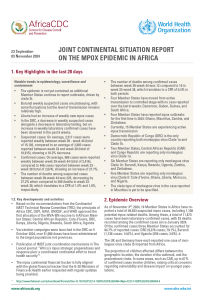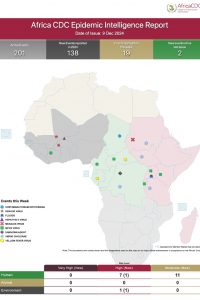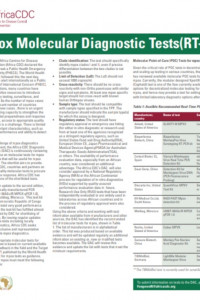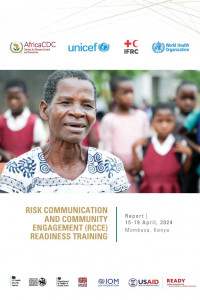
- Version
- Download 5534
- File Size 9.01 MB
- File Count 6
- Create Date 4 December 2023
- Last Updated 4 December 2023
Africa CDC Reproductive Health | Strategic Priorities 2022-2026
EXECUTIVE SUMMARY
In 2006, the Special Session of African Union Health Ministers adopted the Maputo Plan of Action for implementing the Continental Policy Framework on sexual and reproductive health and rights (SRHR), which expired at the end of 2015. The goal was for all stakeholders and partners to join forces and re-double efforts, so that together, the effective implementation of the Continental Policy framework including universal access to sexual and reproductive health by 2015 in all countries in Africa can be achieved. The Revised Maputo Plan of Action (MPoA) 2016 – 2030 was subsequently endorsed by the African Union Heads of State at the 27th AU Summit in July 2016 in Kigali, Rwanda. The plan reinforces the call for universal access to comprehensive sexual and reproductive health services in Africa and lays foundation to the Sustainable Development Goals, particularly Goal 3 and 5, as well as the African Union Agenda 2063.
However, seven years into the SDGs, key RH indicators are off track for Africa: Maternal Mortality ratio for Africa is 542/100, 000 live births (Global average 211/100, 000, and SDG target 70/100, 000), universal access to sexual and reproductive health-care services for sub-Saharan Africa is 28%, north Africa is 35% (Global average 44%) and Universal Health Coverage index for Africa is 46% (Global average 66%).
Africa CDC is very strong in responding to infectious disease outbreaks on the continent, but these outbreaks directly and indirectly cripple SRH services, and supporting SRH services during these emergency situations is not prioritised. Countries affected by humanitarian crisis disproportionately contribute to global maternal and newborn mortality and morbidity; 61 per cent of global maternal deaths occurred in
countries affected by humanitarian crises, whilst more than 80% of countries with the highest newborn mortality have suffered from recent conflict, natural disaster or both.1 2
Emergent humanitarian settings and situations of conflict, post-conflict, disease outbreaks and disaster significantly hinder maternal and newborn health (MNH) improvement efforts required to meet global targets. 4,5 More than 235 million people (75%) in need of humanitarian assistance globally are women and children. 6 To compound the situation further, women, newborns, their families and health care providers are grappling with the impact of the COVID 19 pandemic, projected to negatively impact coverage of maternal and newborn health services, with a resultant increase in mortality. 7,8 For example, evidence shows a significant increase in clinically relevant anxiety, depression and intimate partner violence in the first 9 months of the pandemic – all of which are concerningly relevant to perinatal health .9 Using COVID 19 pandemic over the last 2 years as an emergency situation scenario, against the back drop of the predicted impact of covid-19 on sexual and reproductive health services/maternal and newborn health services, an in-depth analysis of the impact of covid-19 on SRHR/MNH/Adolescent health in the continent, including in humanitarian settings is required.
Attached Files
| File | Action |
|---|---|
| Reproductive Health Strategic Priorities 2022 - ARA | Download |
| Reproductive Health Strategic Priorities 2022 - ENG | Download |
| Reproductive Health Strategic Priorities 2022 - FRE | Download |
| Reproductive Health Strategic Priorities 2022 - POR | Download |
| Reproductive Health Strategic Priorities 2022 - SPAN | Download |
| Reproductive Health Strategic Priorities 2022 - SWA | Download |






